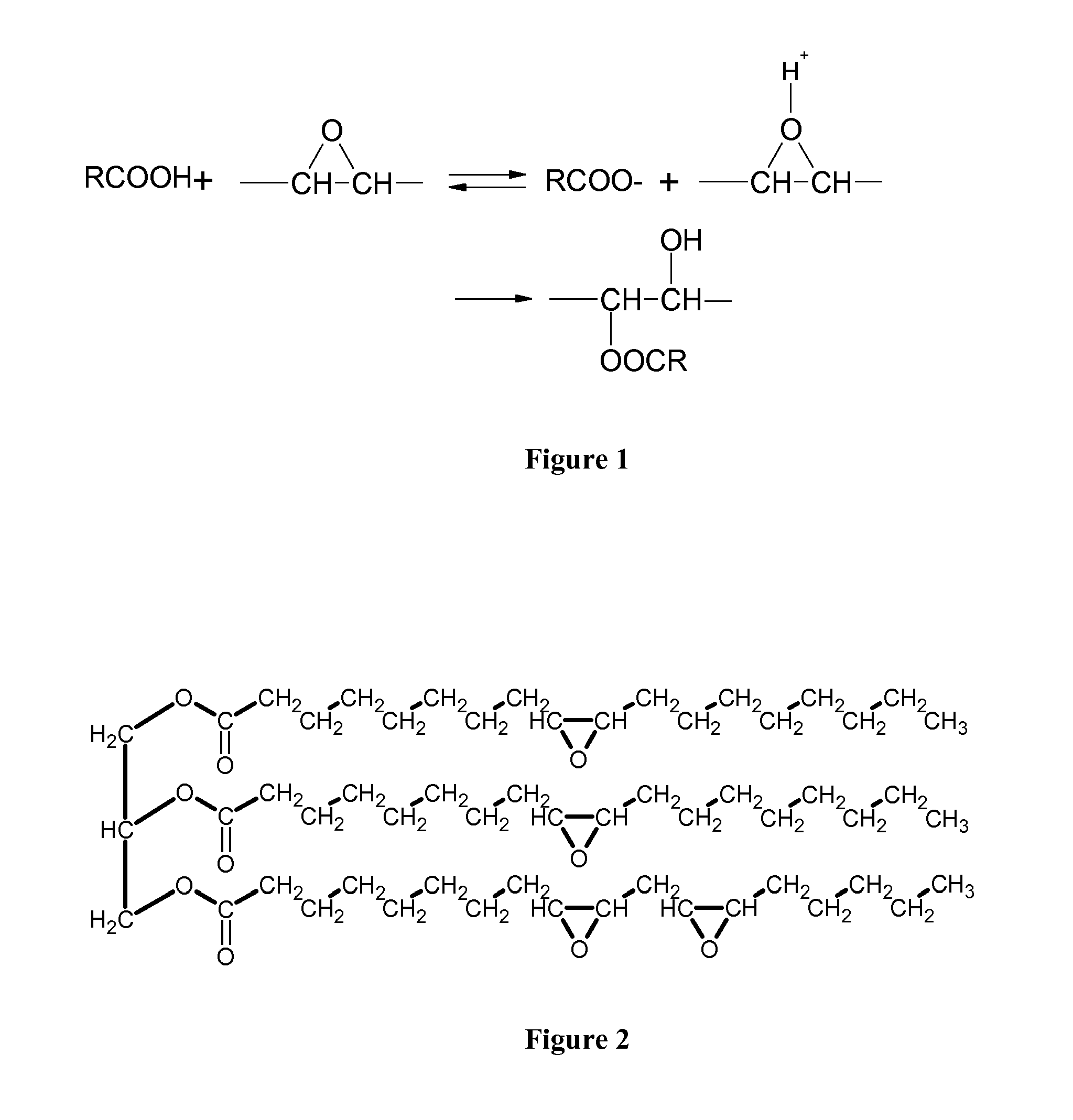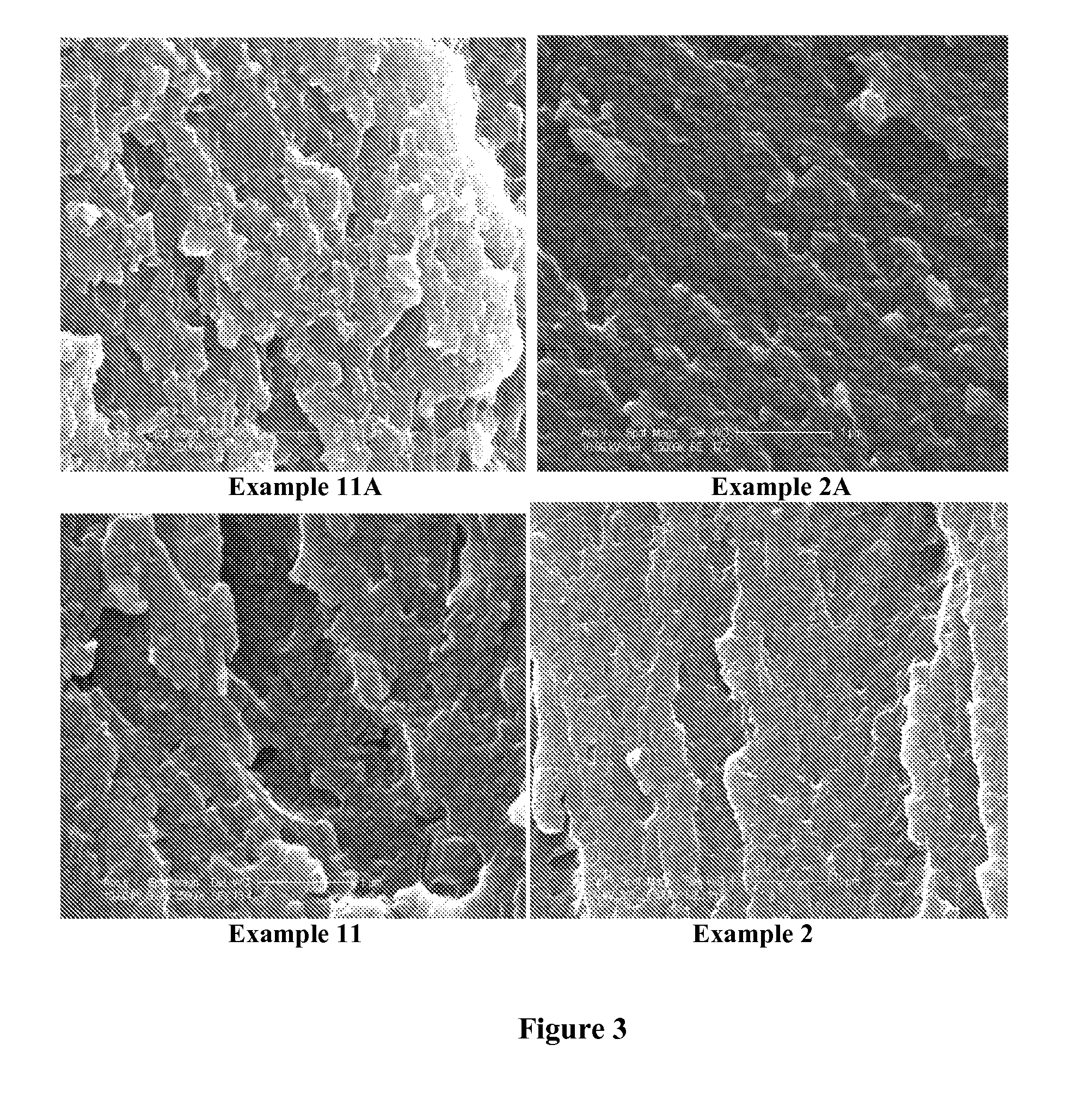Toughening cross-linked thermosets
a thermoset and cross-linked technology, applied in the direction of fatty acid esterification, organic chemistry, etc., can solve the problems of low resistance, limited application as structural materials, and unmodified vinyl esters, and achieve the effect of reducing the content of hazardous air pollutan
- Summary
- Abstract
- Description
- Claims
- Application Information
AI Technical Summary
Benefits of technology
Problems solved by technology
Method used
Image
Examples
examples
Materials and Methods
[0078]Commercial epoxidized soybean oil (ESO) from Chemtura Corp., namely Drapex™ 39, was used as a starting material for preparation of the triglycerides. Based on technical information and chemical analysis (NMR, GPC), the molecular weight of Drapex™ 39 is about 1000 g / mol, and the epoxy equivalent weight (EEW) is about 250, indicating the presence of 4 epoxy groups in each ESO molecule. The structure of Drapex™ 39, based on 1H-NMR analysis and related information is shown in FIG. 2.
[0079]To prepare the acrylated triglyceride (AESO), a mixture of the methacrylic acid and the epoxidized triglyceride was placed in oven at 70° C. for 1 hour and subsequently, heated at 90° C. for another 3 hours. Acid number titration was used to determine when the reaction is complete. The fatty acid was then added to the product of the acrylation reaction, mixed well, and heated in oven at 90° C. for 6 hours until the completion of the reaction as indicated by acid number titrat...
example 21
[0102]Because the synthesis of the grafted triglyceride of Examples 17-20 ended with an acid number of 24 (higher than desired), the grafted triglyceride of Examples 17-20 was synthesized using 80% of the methacrylic acid and 80% of the octanoic acid that were used in Examples 17-20. The acid number at the completion of this synthesis was 4, indicating a level of acid remaining in the grafted triglyceride within the desired range. Derakane™ 411-350 was cured with 10 wt % of the grafted triglyceride prepared in this example and the fracture toughness of the cured vinyl resin system was found to be 1338±321 J / m2, which is comparable to the fracture toughness of the cured vinyl resin system having a 10% loading of grafted triglyceride of Example 18.
PUM
| Property | Measurement | Unit |
|---|---|---|
| viscosity | aaaaa | aaaaa |
| heat deflection temperature | aaaaa | aaaaa |
| flexural modulus | aaaaa | aaaaa |
Abstract
Description
Claims
Application Information
 Login to View More
Login to View More - R&D
- Intellectual Property
- Life Sciences
- Materials
- Tech Scout
- Unparalleled Data Quality
- Higher Quality Content
- 60% Fewer Hallucinations
Browse by: Latest US Patents, China's latest patents, Technical Efficacy Thesaurus, Application Domain, Technology Topic, Popular Technical Reports.
© 2025 PatSnap. All rights reserved.Legal|Privacy policy|Modern Slavery Act Transparency Statement|Sitemap|About US| Contact US: help@patsnap.com



